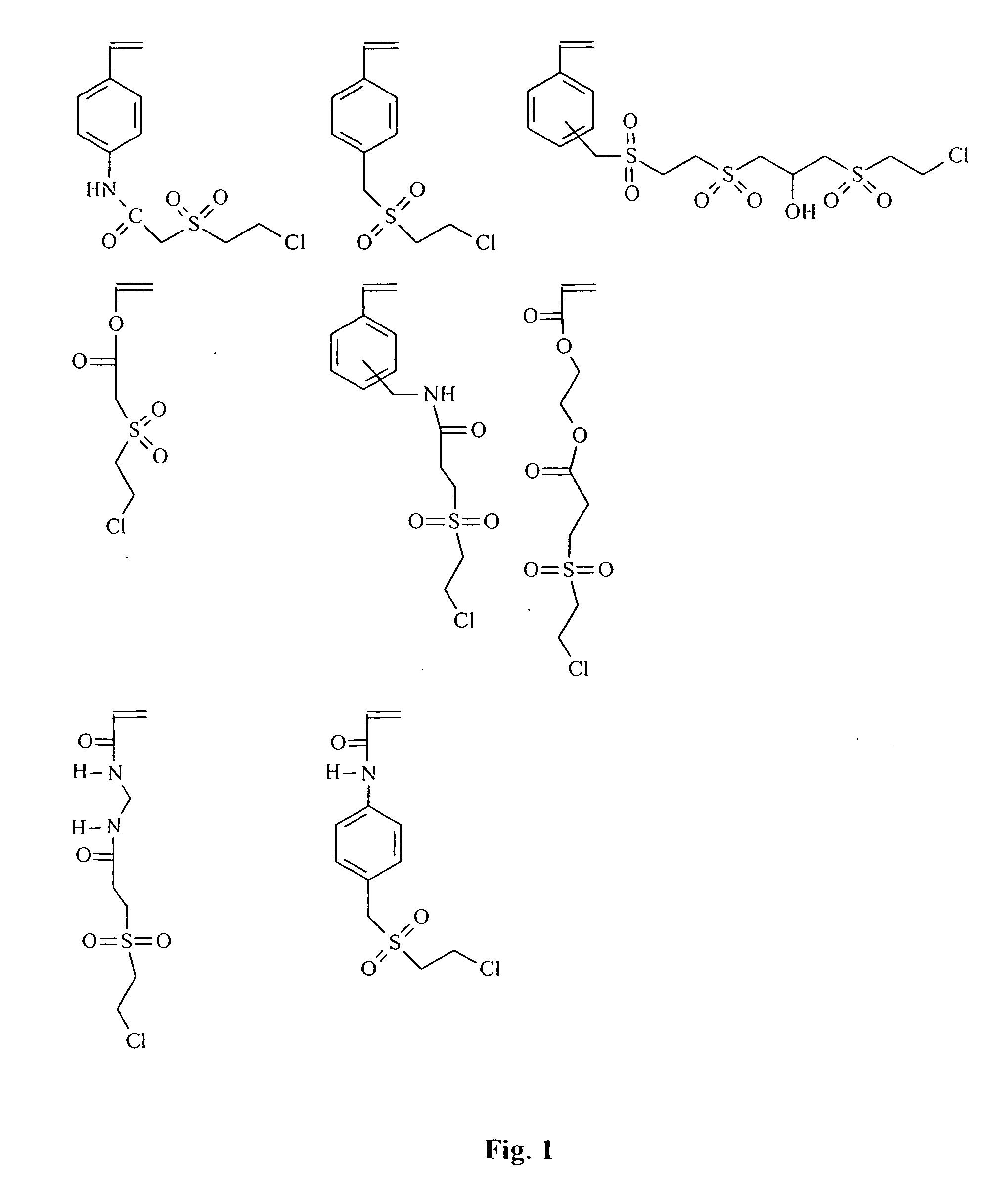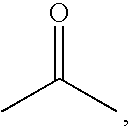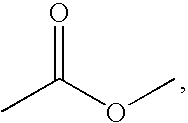Filled, biological microarray and method for use
- Summary
- Abstract
- Description
- Claims
- Application Information
AI Technical Summary
Benefits of technology
Problems solved by technology
Method used
Image
Examples
example 1
Example 1 illustrates possible preparations of organic fillers.
Sample P-1: Synthesis of Dispersion of Organic Filler P-1 (Methyl Methacylate Latex)
Methyl methacrylate (100.00 g, passed over basic alumina) was combined with deionized water (900.00 g), anionic surfactant Aerosol OT-75 (5.33 g, obtained from Cytec as a 75% solution) and sodium bicarbonate (0.50 g) in a 2 liter 3-neck round bottom flask outfitted with a condenser, mechanical stirrer, and nitrogen inlet. The contents were bubble degassed with nitrogen for 10 minutes and the flask was placed in a thermostatted water bath at 60° C. Sodium persulfate (1.00 g) and sodium metabisulfite (0.10 g) were added and the reaction was allowed to stir for 16 hours. 989.24 g of a coagulum-free latex was obtained. The final dispersion concentration was 10.0 wt. % solid particles. The mean particle diameter was found to be 0.0655 microns via photon correlation spectroscopy using a Microtrac UPA150 instrument.
Sample P-2: Synthesis o...
example 2
Example 2 illustrates the preparation of the filled gelatin based substrate where the filler comprises inorganic and organic filler particles.
Coatings with Inorganic Filler
Preparation of Element 1
A coating composition was prepared from 58.0 wt. % of Snowtex C (a 20 wt. % aqueous colloidal dispersion of silica from Nissan Chemical Industries, Ltd.), 3.0 wt. % gelatin (APO Code 4 gelatin), 13.0 wt. % of a 1.8 wt. % aqueous solution of bisvinylsulfonylmethane (BVSM), 3.0 wt. % of a 10.0 wt. % aqueous solution of anionic surfactant Alkanol-XC (purchased from DuPont), 0.3 wt. % of a 9.0 wt. % aqueous solution of coating aid FT-248 (a fluouro-surfactant purchased from Bayer), and 22.7 wt. % water. The relative proportions of inorganic filler particles to gelatin are therefore 80 / 20 by weight. The solution was coated onto a support comprised of a glass microscope slide that was previously coated with a poly-L-Lysine subbing layer (purchased from LabScientific, Inc.). The thickness o...
example 3
This example illustrates the method of evaluating gelatin-coated biological, here, protein, microarray substrate using a modified Enzyme Linked Immunosobent Assay (ELISA). This example also illustrates the reduction of background fluorescence by incorporating filler particles into gelatin binder to produce a filled gelatin layer.
The procedure to perform the modified ELISA follows.
1. Goat anti-mouse antibody IgG from Sigma was dissolved in PBS (phosphate saline buffer, pH7.4) buffer to a concentration of 1 mg / mL. A series of diluted of goat anti-mouse antibody IgG were spotted onto gelatin coated substrates using a Cartisian Arrayer. The spotted substrates were incubated in a humid chamber for 1 hour at room temperature.
2. The substrates were washed four times in PBS buffer with 1% nonionic surfactant Triton X100™, 5 min each time with shaking.
3. The washed substrates were incubated in PBS buffer with 1% glycine for 15 min with constant shaking.
4. The substrates were washe...
PUM
| Property | Measurement | Unit |
|---|---|---|
| Fraction | aaaaa | aaaaa |
| Percent by mass | aaaaa | aaaaa |
| Percent by mass | aaaaa | aaaaa |
Abstract
Description
Claims
Application Information
 Login to View More
Login to View More - R&D
- Intellectual Property
- Life Sciences
- Materials
- Tech Scout
- Unparalleled Data Quality
- Higher Quality Content
- 60% Fewer Hallucinations
Browse by: Latest US Patents, China's latest patents, Technical Efficacy Thesaurus, Application Domain, Technology Topic, Popular Technical Reports.
© 2025 PatSnap. All rights reserved.Legal|Privacy policy|Modern Slavery Act Transparency Statement|Sitemap|About US| Contact US: help@patsnap.com



